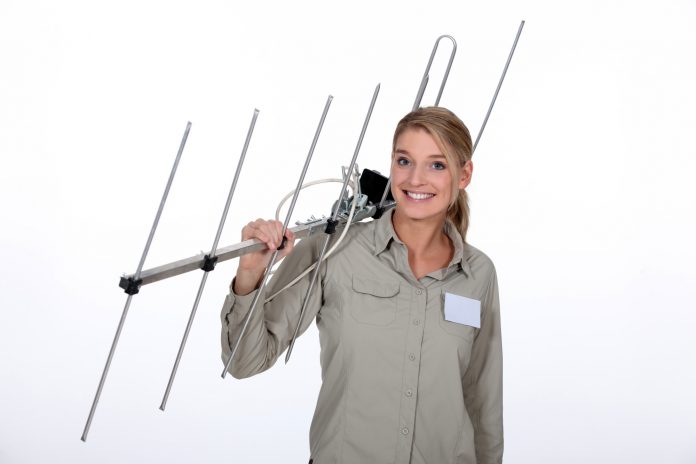Despite the popularity of streaming sites like Netflix and Hulu, the TV antenna of generations past is making a comeback.
People are looking for ways to cut their household budget by dropping cable and even streaming services. These cord-cutters know that the TV channels they can get using an antenna aren’t just good quality; they’re also completely free.
If you’ve recently purchased your first TV antenna, read on for what you need to know before calling the antenna installer.
Types of TV Antenna
There are three main types of antennae. They range from a small digital antenna to an extensive, roof-mounted system.
Indoor TV Antenna
These unobtrusive antennas are tiny, cheap, and easy to install. Some are designed to sit atop or beside a TV, while others can be hidden away not to affect your decor.
They’re designed for use in urban areas or homes close to broadcast towers. This is because they’re not powerful enough to work over long distances.
In most cases, these plug-go-systems either screws or velcros onto your wall. And unlike the wire bunny years of old, they look sleek and contemporary.
Attic Antenna
If you’re looking for something a bit stronger, or don’t like the idea of having an antenna in your lounge, consider installing an attic antenna. They’re positioned in your attic, where their height allows them to capture broadcast signals better.
These require a bit more skill and work to install. You’ll need to get up into your attic with tools, find a suitable spot to drill the antenna securely to the wall and make sure you can thread a cable down to your TV.
This kind of antenna doesn’t work as well with metal roofing because the metal can block the signal. In that case, you’ll need an outdoor aerial.
Outdoor Antenna
An outdoor antenna, also known as a whole antenna or rooftop aerial, is mounted to your roofline. It’s a powerful device intended for use in rural areas situated far away from broadcast towers.
These are heavy pieces of machinery, and giant outdoor antennas need to be installed on a concrete pad on the ground. Therefore, the installation of most outdoor antennas is better left to the professionals.
Signal Range
When it comes to antenna installation, where you mount the antenna is determined by size and type as by signal range. If you’re close to a broadcast source, you can get away with a small, TV-mounted antenna. The further away you are, the larger the antenna you’ll need.
Power Source
If you’re after the very best tv watching available, choose an outdoor antenna with a servo motor and remote. You can adjust the direction of the antenna from the comfort of your living room.
Of course, it’s a bit more expensive, not just in the initial antenna point installation cost, but also in that it will slightly add to your utility bill.
Is a TV Antenna Right for You?
Whether you live in the city or the countryside, you can benefit from the free broadcast access TV antenna provides. There are many types of antennas out there, so do your research to find what’s best for your situation and budget. And if you need to, call in the professionals to install it right the first time.
For more helpful budget-saving and technology content, read the other articles on our website.










